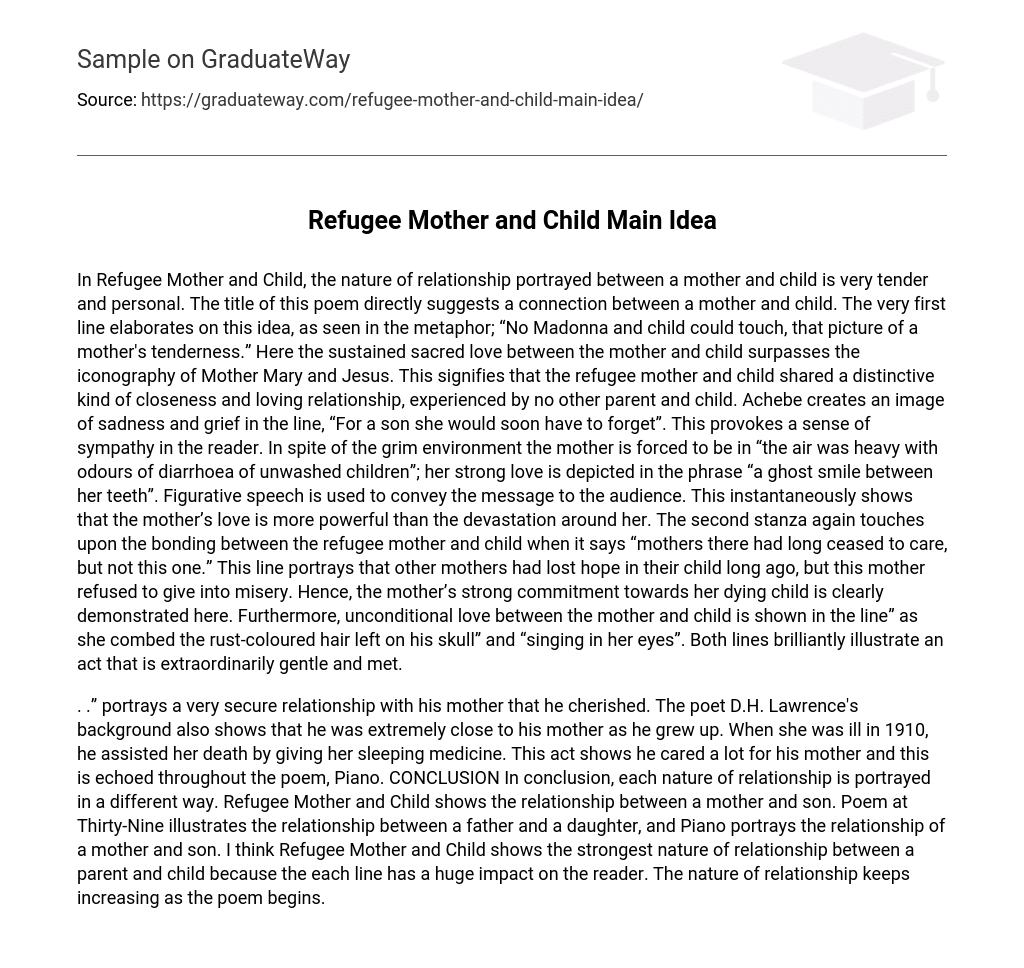The poem “Refugee Mother and Child” depicts a tender and personal relationship between a mother and child. The title itself suggests this connection. The first line further illustrates this idea through the metaphor, stating that no image of Madonna and child can match the mother’s tenderness. This implies that the love between the refugee mother and child surpasses even the sacred bond of Mother Mary and Jesus. It signifies that their closeness and loving relationship is unique and unmatched by any other parent and child. The line “For a son she would soon have to forget” evokes a sense of sympathy in the reader as it portrays the mother’s sadness and grief. Despite being in a grim environment filled with odors of sickness, her strong love is depicted through the phrase “a ghost smile between her teeth”. Figurative language is used to convey this message, instantly showing that the mother’s love is more powerful than the devastation surrounding her. In the second stanza, there is a mention of the strong bond between the refugee mother and child. It states that while other mothers have ceased to care, this one has not given up hope. This highlights the mother’s unwavering commitment to her dying child.Furthermore, the text brilliantly showcases an exceptionally tender and powerful act of unconditional love between a mother and child. This is evident in the line “as she combed the rust-coloured hair left on his skull” and “singing in her eyes”.
The poem “Piano” by D.H. Lawrence depicts a profound and secure bond between the poet and his mother, which he held dear. The poet’s personal background further reveals their close connection as he assisted his mother’s passing during her illness in 1910, indicating his deep care for her. This strong affection is echoed throughout the poem. In conclusion, each poem portrays a distinct nature of relationship: “Refugee Mother and Child” showcases the bond between a mother and son, “Poem at Thirty-Nine” illustrates the relationship between a father and daughter, while “Piano” delves into the connection between a mother and son. Personally, I believe that “Refugee Mother and Child” portrays the strongest nature of relationship between a parent and child, as each line in the poem has a profound impact on the reader and the intensity of the relationship progressively intensifies as the poem unfolds.





